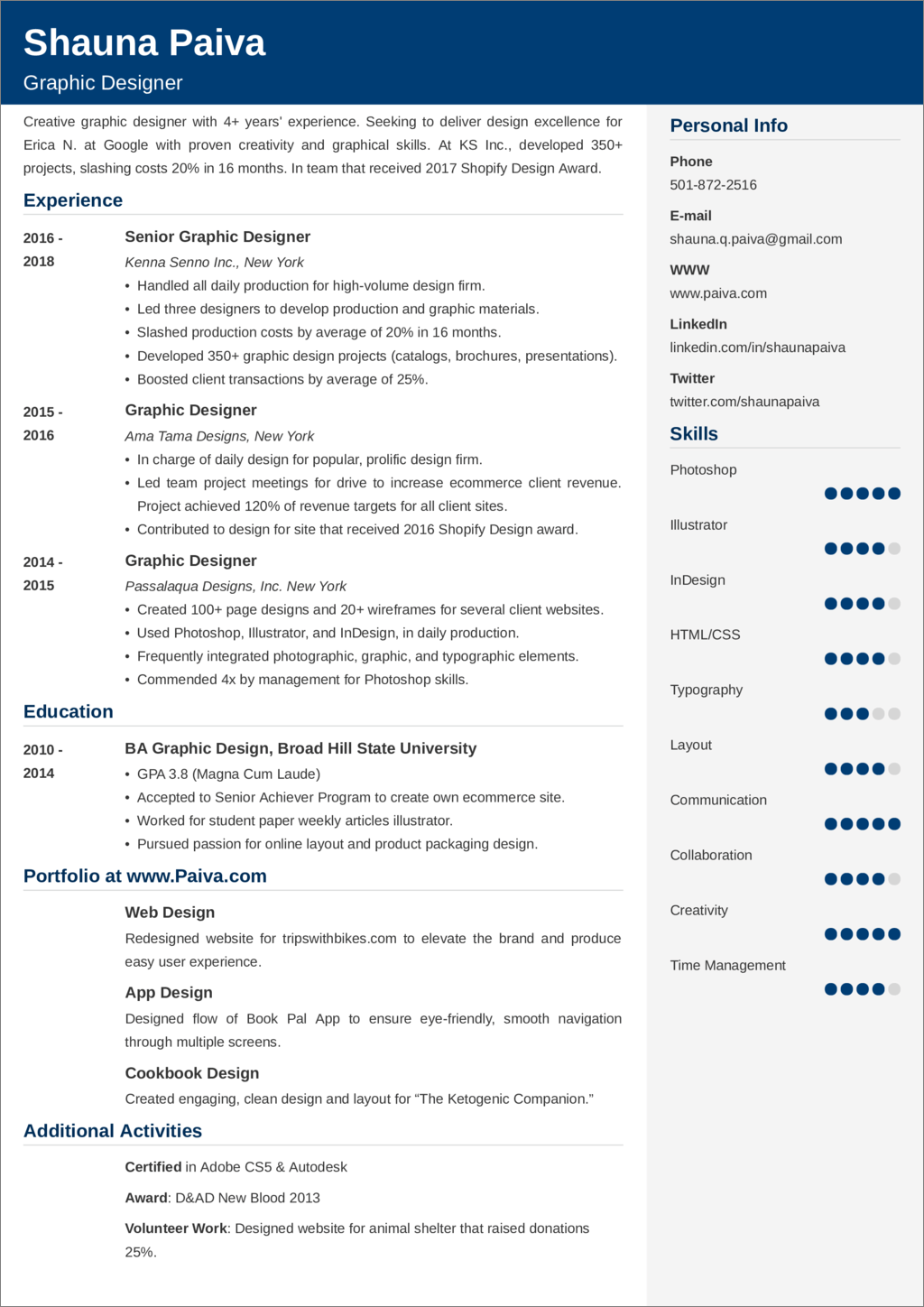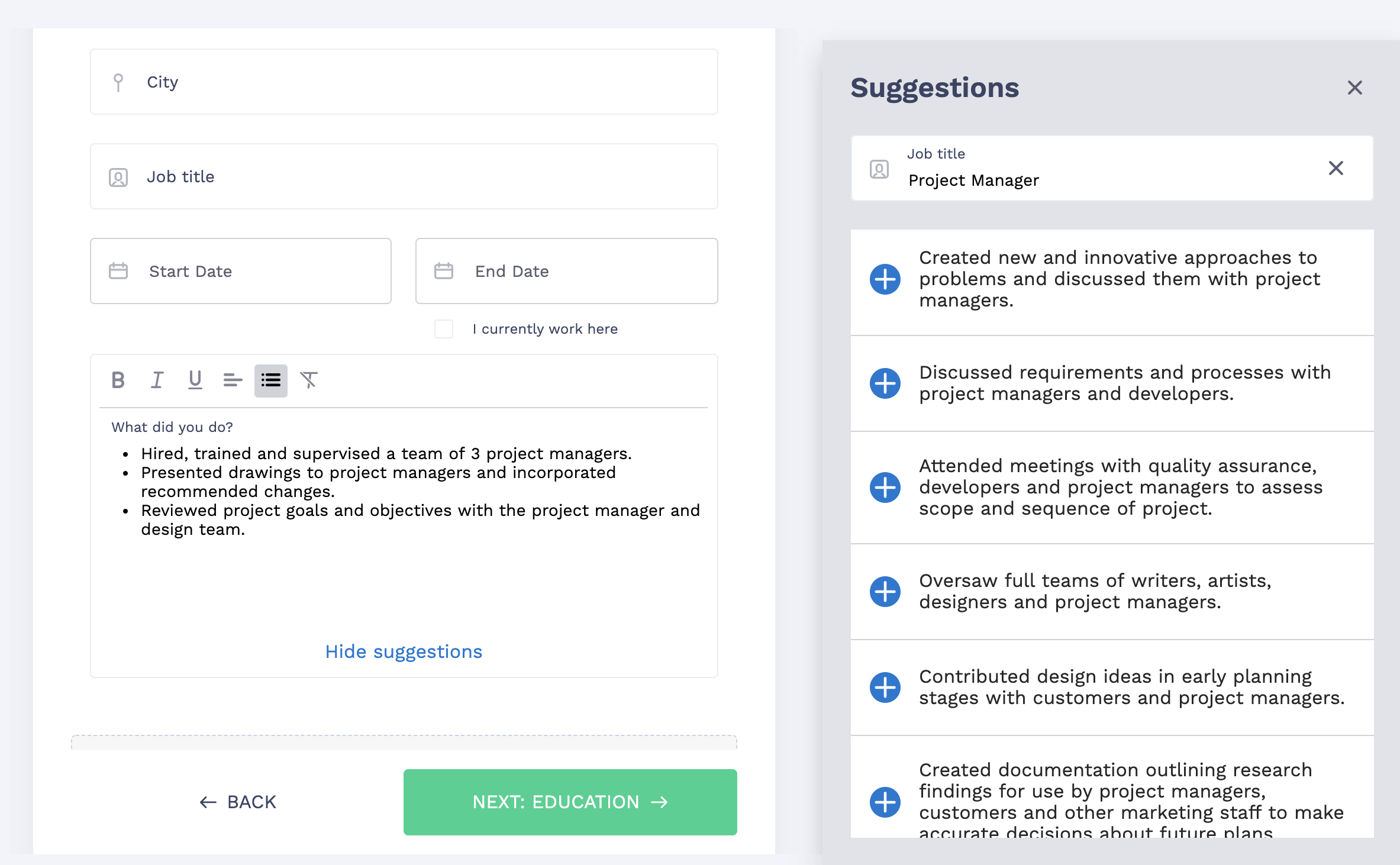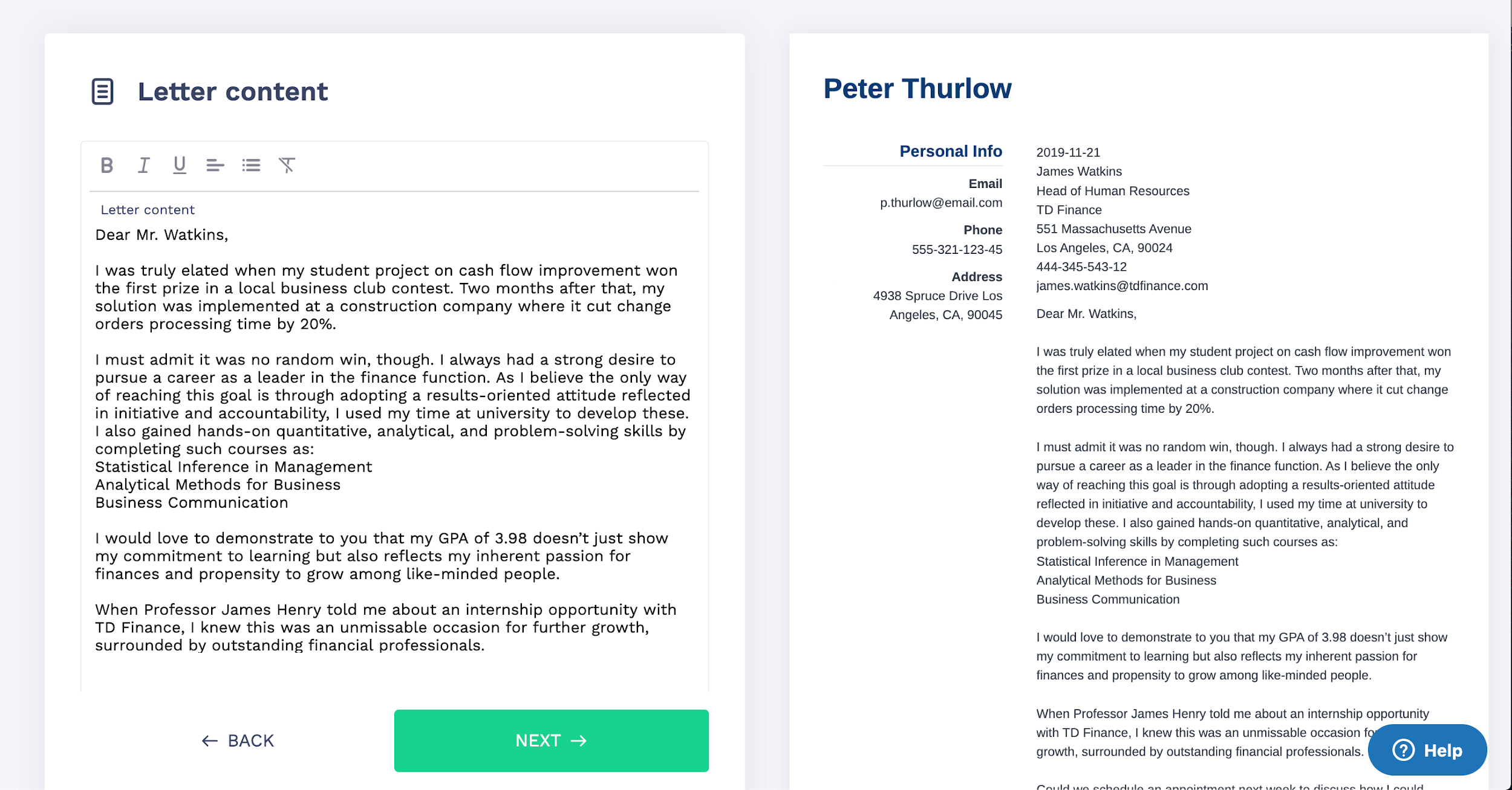What Does a Good Resume Look Like
A quick look at the recruitment documents is enough for hiring manager to decide whether or not they'd like to give you a shot.
And this "quick look" lasts only about 7 seconds.
So—
Make sure your resume looks nothing short of awesome.
In this article you'll learn:
- What a professional resume should look like.
- How to format it to make it look great.
- What sections a good resume should consist of.
And if you're looking for a step-by-step guide on how to make a perfect resume, check: Resume 101—How to Write a Resume [Templates and 25+ Examples]
1. What Does a Good Resume Look Like?
Listen—
There's no better way of learning what a good resume looks like than actually seeing one.
So, here it is:
This Is What a Good Resume Looks Like
Save hours of work and get a resume like this. Pick a template, fill it in. Quick and easy. Choose from 18+ resume templates and download your resume now.

Create your resume now
What users say about ResumeLab:
I had an interview yesterday and the first thing they said on the phone was: "Wow! I love your resume."
PatrickI love the variety of templates. Good job guys, keep up the good work!
DylanMy previous resume was really weak and I used to spend hours adjusting it in Word. Now, I can introduce any changes within minutes. Absolutely wonderful!
George
Create your resume now
Before we discuss what makes this resume example a particularly good one, consider this:
Studies show recruiters spend only about 7 seconds initially scanning a resume.
The resumes that recruiters favor have several things in common:
- Simple layouts
- Easily navigable sections
- Reader-friendly headings
- Visible job titles
In fact—
This last element is something the recruiters spend the most time looking at.
But this isn't everything.
To fully grasp what a good resume should look like, you must also know what bad resumes have in common:
- Insufficient white space
- Cluttered look
- Poor layout (e.g. no section headlines)
And—
- Irrelevant content devoid of context
Thanks to such findings, we were able to compile a list of actionable formatting hints to help you make your job resume look professional.
So—
This is how to make your resume look great:
1. Choose the right resume margins.
Even though this may seem pretty obvious, many job seekers don't realize that setting the wrong margins will ruin the balanced look of their resume.
So—
The optimum size for margins is one inch on each side.
If you want to find out how exactly this works, and what the other acceptable sizes for resume margins are, read our dedicated guide.
2. Set the right line spacing.
You don't want your resume to look either crammed or empty. The safest line spacing is in the range between 1 or 1.15.
And—
Avoid double spacing.
Even though adding white space is necessary, too much of a good thing is not such a good thing.
3. Pick the best resume fonts.
What are the best fonts for a resume?
Well—
Since we have a dedicated guide on the subject, let's just put it this way:
Simple and easy on the recruiter's eyes.
Helvetica, Arial, Roboto are all great choices. Comic Sans, Papyrus, and suchlike—you'd better give a wide berth to.
4. Find the best resume format for your needs.
Your resume must reflect your experience and skills in the most relevant way.
That's why choosing the right resume style is vital. Without it, the recruiter won't be able to find the information they're looking for.
The three most popular resume formats are:
- Chronological resume
- Functional resume
- Combination resume
Each of them is suitable for different kinds of job seekers.
5. Outline your resume.
Outlining a resume is a crucial part of the resume writing process.
Once you know what sections to put on your resume, you'll find it much easier to give the document a good flow and coherent look.
6. Fill in your resume with relevant content.
Remember:
The most effective resumes are tailored to a specific job offer.
So, see to it that you don't send a generic-looking document to multiple employers.
Expert Hint:The length of a resume matters. As a rule, it's best to make your resume as long as necessary but not longer. For instance, entry-level candidates or those applying for junior positions may opt for one-page resumes. However, recent studies show that recruiters may have a preference for two-page resumes, so there's no need to cram if you find it hard to fit everything into a single page.
The ResumeLab builder is more than looks. Get specific content to boost your chances of getting the job. Add job descriptions, bullet points, and skills. Easy. Improve your resume in our resume builder now.

CREATE YOUR RESUME NOW
Nail it all with a splash of color, choose a clean font, highlight your skills in just a few clicks. You're the perfect candidate and we'll prove it. Use the ResumeLab builder now.
2. Elements of a Professional Resume
Now that you've seen what a good resume should look like, and learned some basic formatting rules—
Let's see what sections a resume should consist of and what order you should put them in.
The first four sections are the most important ones on your resume, and they comprise the resume's main body:
1. Resume Header
It doesn't matter what kind of resume you're writing—
The topmost section is always the same, and it's called the resume header.
It's where you put your contact details and other basic information to let the recruiter know who you are and how to get in touch with you.
2. Resume Profile
The next section of your resume is the so-called resume profile.
Think of the resume profile, as a brief rundown of your entire resume that's supposed to serve a sales pitch of a sort.
Your resume intro can take the form of a:
- Resume summary—focused on your relevant experience.
- Professional objective—that highlights your skills.
- Qualifications summary—that combines elements of both.
3. Experience
The meat and potatoes of your resume.
The way you present your experience on a resume could be a make or break factor in your job search.
This is where you have a chance to use resume keywords in context and show the recruiter you've got what it takes to succeed in the role.
Expert Hint: Avoid the so-called keyword stuffing on your resume. Mindless copy-pasting sections of the original job offer into your document may help you get past the ATS scan, but you'll be shooting yourself in the foot. Once the recruiters see what you're up to, they may not only reject your resume but blacklist you eventually.
4. Education
Depending on how much experience you have, the education section on a resume could be either just a formality or your main selling point.
Plus, if you're fresh out of college you may consider putting your education on a resume before the experience section.
5. Skills
The skills you put on a resume must testify to one thing—
You have the knowledge and expertise necessary to succeed in the role.
You can either place the skills section in a sidebar on your resume, just like you can see in the example above or put them in the main body if you have enough room.
6. Additional Sections
The sections listed above can be found on the vast majority of resumes.
But—
You can consider including other sections as well. Just make sure they actually add value rather than simply fill in the blank space:
- Awards
- Hobbies and Interests
- Volunteering
- Certifications
- Professional References
Remember:
Relevance is the name of the game.
Double your impact with a matching resume and cover letter combo. Use our cover letter builder and make your application documents pop out.

CREATE YOUR COVER LETTER NOW
Want to try a different look? There's 18 more. A single click will give your document a total makeover. Pick a cover letter template here.
Expert Hint: Not all Free Resume Builders are ATS friendly. To make sure your creative resume reaches a human reader, send it directly to the recruiter's inbox.
Key Points
Here's all you need to remember about what a resume should look like:
- Format your resume so that it's reader-friendly.
- Divide it into easy-to-find sections.
- Make sure your job titles are well-visible.
- Choose the best resume format for your needs.
- Include all the relevant sections and put them in the right order.
Do you have any questions? Would you like to share your observations on what a resume should look like? We'd love to hear from you! Give us a shout out in the comments below!
What Does a Good Resume Look Like
Source: https://resumelab.com/resume/look
0 Response to "What Does a Good Resume Look Like"
Post a Comment